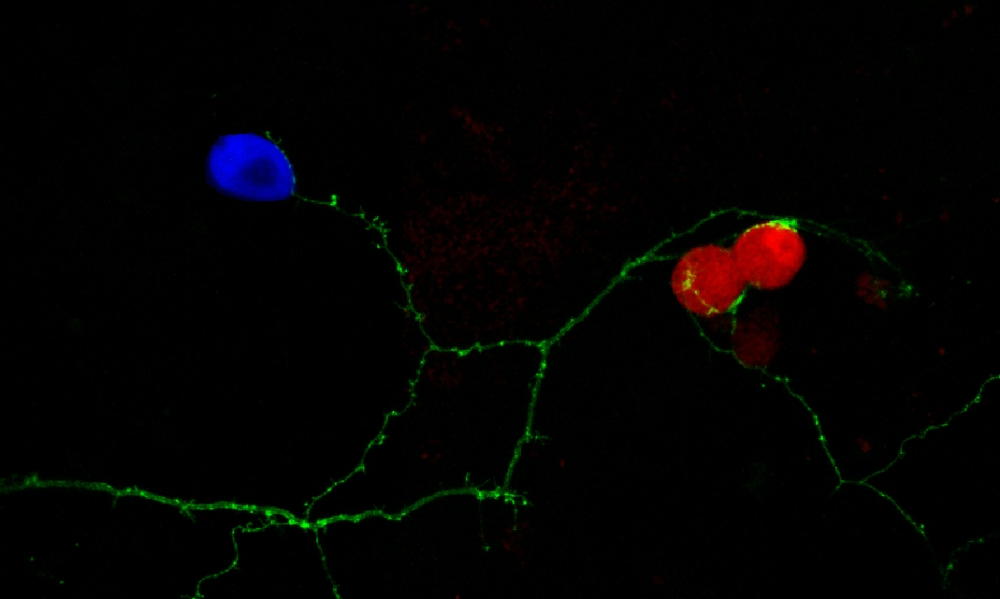
Although the cellular phenomena of synaptogenesis and synaptic plasticity have been well documented, their molecular mechanisms remain largely unknown. For example, what signals do axons provide to trigger the postsynaptic differentiation? To identify these cues, researchers in the Chen Lab have expressed candidate presynaptic proteins into non-neuronal cells and placed them in neuronal cultures, looking for cues that can "fool" neurons to make postsynaptic contact with the transfected non-neuronal cells. They have discovered that a presynaptic neuronal adhesion molecule, β-neurexin, induces clustering of postsynaptic scaffold proteins. Other synaptic adhesion molecules, such as N-cadherin, do not have such function. Shown here are PC12 cells expressing either β-neurexin (red) or N-cadherin (blue) co-cultured with hippocampal neurons. The PC 12 cells expressing β-neurexin induced clustering of postsynaptic scaffold proteins, such as PSD-95 (green) in contacting dendrites. However, the PC 12 cells expressing N-cadherin did not have such effect. The morphology of the neurexin-induced postsynaptic structure observed with laser confocal microscopy is indistinguishable from that of normal synapses.
Photo courtesy of Assistant Professor Lu Chen.